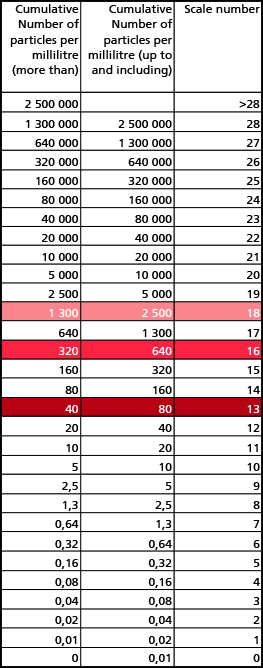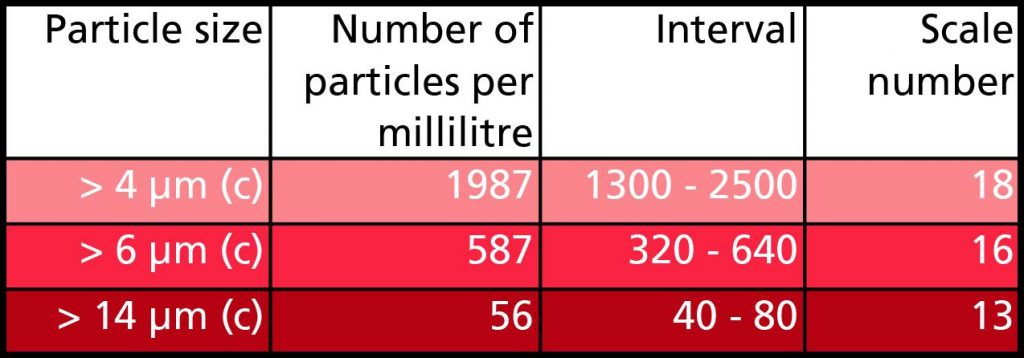ISO 4406: the meaning of the three-digit code
Particle measurements according to ISO 4406:2017 are usually shown as a three-digit code. Code numbers (classes) defined according to ISO 4406 are assigned to the measured particle numbers for 3 channels with different particle sizes. Why is this type of display preferred instead of just showing particle numbers?
The answer is quite simple: short codes are more concise than long particle numbers and are easier to represent. The three-digit display makes it easy to compare measurement data or illustrate cleanliness requirements in a simplified way. The following table shows a cumulative measurement result for an oil containing 1,987 particles per milliliter > 4 µm(c). Of these, 587 are particles per milliliter > 6 µm(c). The number > than 14 µm(c) is 56 particles per milliliter.
 The following table shows the same measurement result displayed as the three-digit code using the ISO 4406 sizes of > 4 µm(c), > 6 µm(c) and > 14 µm(c). The respective cleanliness class is 18/16/13, which indicates that this specific liquid contains between 1,300 and 2,500 particles per milliliter > 4 µm(c). A class 16 is assigned to the counting range of 320 to 640 particles per milliliter, while code 13 indicates that the liquid contains between 40 and 80 particles per milliliter that are > 14 µm(c).
The following table shows the same measurement result displayed as the three-digit code using the ISO 4406 sizes of > 4 µm(c), > 6 µm(c) and > 14 µm(c). The respective cleanliness class is 18/16/13, which indicates that this specific liquid contains between 1,300 and 2,500 particles per milliliter > 4 µm(c). A class 16 is assigned to the counting range of 320 to 640 particles per milliliter, while code 13 indicates that the liquid contains between 40 and 80 particles per milliliter that are > 14 µm(c).
